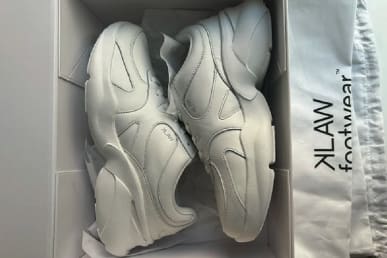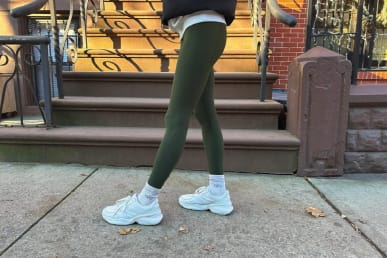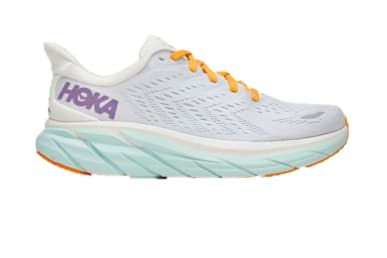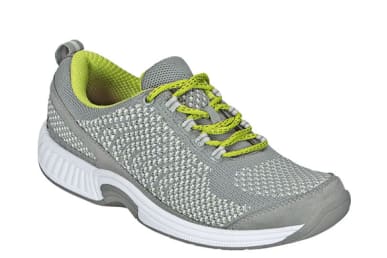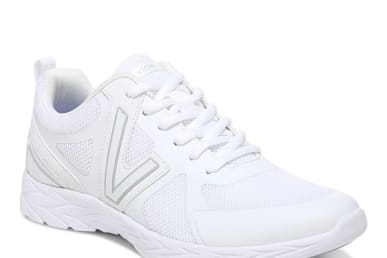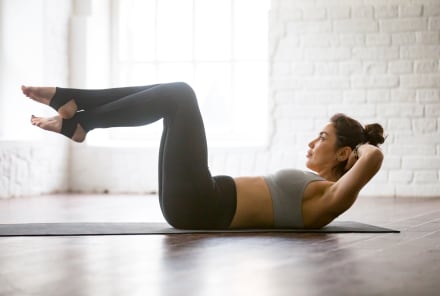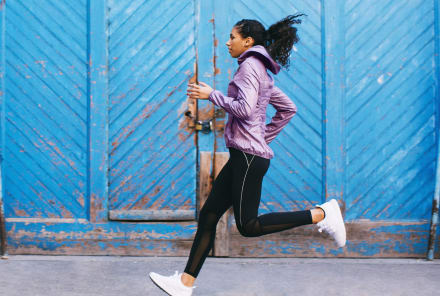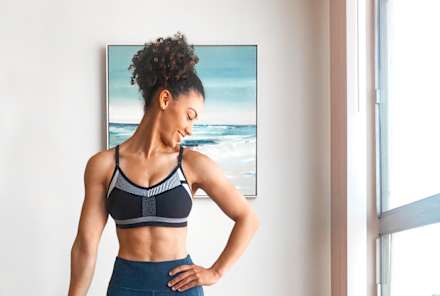Advertisement
7 Best Orthopedic Shoes, Based On Podiatrist Criteria & Testing

First things first: Let's scrap the image you've conjured up of an orthopedic shoe. The best orthopedic shoes have come a long way, meaning it's actually possible to find stylish options that offer the same benefits of increased arch support and a sturdier, pain-relieving construction1.
Our panel of podiatrists agree that the best orthopedic shoes should have proper arch support and stability, and accommodate a custom orthotic—so we vetted each shoe on our list against those guidelines. We also prioritized materials, comfort, and versatility, and we've enlisted our team for hands-on testing.
- Best for walking: KLAW 528
- Best for running: Brooks Adrenaline GTS 22
- Best for plantar fasciitis: Hoka Clifton 9
- Best affordable: Skechers GOwalk Joy
- Best for bunions: Orthofeet Coral Stretch Knit
- Best for back & knee pain: Saucony Integrity Walker 3
- Best for wide feet: Vionic Miles Active Sneaker
Per holistic podiatrist Robert Kornfeld, DPM, true orthopedic shoes are custom-made based on a cast of your foot—but many brands now offer their own takes on "orthopedic shoes" (as featured on our list), which are less expensive and often more aesthetically pleasing.
Our favorite shoes on the list are the KLAW 528 walking shoes and the Hoka Clifton 9, but keep reading to discover if another style better suits your individual needs.
Do you need orthopedic shoes?
Meet our experts
Robert Kornfeld, DPM
Robert Kornfeld, DPM is a holistic podiatrist and a graduate of the New York College of Podiatric Medicine. He is a fellow at the American College of Alternative Medicine and board-certified by the American Association of Integrative Medicine.
Anne Sharkey, DPM
Anne Sharkey, DPM, is an Austin-based podiatrist at the North Austin Foot & Ankle Institute. She specializes in ankle sprains, ankle stabilization, Achilles tendon disorders, bunion correction, and heel pain.
Dina Gohil, DPM
Dina Gohil, DPM, is an experienced podiatrist with a demonstrated history of working in the medical practice industry.
The best orthopedic shoes
My personal favorite orthopedic walking shoes, the KLAW 528 was designed by New York podiatrist, Nelly Lobkova, DPM. This chunky shoe accommodates wide feet, bunions, plantar fasciitis, and other foot issues.
Per our podiatrist’s guidelines, the KLAW 528 walking shoe features solid arch support and a removable insole (should you wish to use a custom orthotic). It has a deep heel cup and sufficient cushioning, with a sturdy construction that supports your feet with every step.
Pros & cons
Pros & cons
- Cloud-like cushioning
- Wide toe box
- Designed by a podiatrist
- Thicker material could be too warm in hotter temperatures
What our tester says
What our tester says
Our commerce editor, Carleigh Ferrante, walks an average of 12,000 steps per day—and, despite owning over a dozen pairs of sneakers, she wears the KLAW 528 walking shoes daily. They keep her feet supported and her body aligned, plus they're incredibly comfortable and don't aggravate her bunions.
Bonus: These sneakers shatter any preconceived notions that an orthopedic shoe can't be stylish.
Designed to accommodate both over- and under-pronators, the Adrenaline GTS 22 is supportive, yet lightweight. We picked it primarily because of the brand's “GuideRails” technology, which keeps your foot in alignment during walks and runs.
While this shoe is a good balance of support and cushion as-is, we appreciate that you can remove the insole to insert your custom orthotics if necessary.
It's also worth mentioning that Brooks is making a respected effort toward sustainability; the company uses recycled materials (like plastic water bottles) in its designs and aim to achieve net zero carbon emissions by 2040.
Pros & cons
Pros & cons
- Orthotic-friendly
- APMA seal of acceptance
- Uses recycled materials
- Shorter laces
- Mixed reviews about durability
What our podiatrist panel says
What our podiatrist panel says
Podiatrist Dina Gohil, DPM, says the Brooks Adrenaline GTS is known for stability and comfort, also noting its roomy toe box. Kornfeld echoes this, adding that "This is a really good shoe for those with more flexible, less stable feet."
"They hug the ground well and feel stable during the entire gait cycle," Kornfeld says.
For a super comfortable and supportive shoe that won’t break the bank, we like Skechers’ GOwalk Joy sneakers. They’re under $75 (and often marked down to less than $50), and get rave reviews particularly for their cushion and stability.
The removable Ortholite sole is made from PU foam and aerogel, which is meant to make the shoe’s cushioning last longer. We wouldn't recommend these for heavy exercise since they are more lightweight, but they're once of the best shoes for walking or for long days on your feet.
Pros & cons
Pros & cons
- Less expensive
- Several color & width options
- Insoles might not be removable
- Some say they run large
What our tester says
What our tester says
Our tester (a 64-year-old with narrow feet and arthritis) says her pair has held up well through over six months of daily wear. She loves the lightweight design, how easy they are to slip on and off, and the fact that her feet feel supported despite the thick cushioning.
She does note, however, that she needed to use pliers to remove the insole.
Hoka is loved by runners and walkers—and it's one of the top recommended shoe brands from podiatrists we've interviewed. The Clifton 9 shoe was previously recommended to mindbodygreen by both Kornfeld and podiatrist Anne Sharkey.
We appreciate the neutral stability and balanced cushion, which creates a shoe that’s supportive but still reactive. What's more, this shoe has the American Podiatric Medical Association (APMA) seal of acceptance, indicating that is is beneficial for foot health.
Pros & cons
Pros & cons
- Meta-rocker encourages a smooth ride
- Great for people with plantar fasciitis
- Sizing can be inconsistent
What our podiatrist panel says
What our podiatrist panel says
If you find walking and standing stresses your feet and creates symptoms, Kornfeld says this shoe is an ideal pick.
While this show is not quite as well cushioned as some, “its midfoot rocker bottom eases stress on the achilles as well as eases weight bearing load in the forefoot,” he adds.
For those who do want a more customized option, this is a great pick. In addition to having orthopedic insoles, these sneakers come with a plastic arch booster that slides under the insole (for a little extra lift), plus two insole spacers to help you find that just-right fit.
And, even with all of this extra technology, they don’t scream “I’m an orthopedic shoe!” which is a win.
The wide toe-box is what makes these a great option for people with bunions, as well as anyone with swollen feet or hammertoes. Extra cushioning in the sole and a soft, padded interior give your feet a ton of comfort and support—and the stretchy knitted upper helps these shoes mold to your specific shape.
Pros & cons
Pros & cons
- Optional arch booster & spacer
- Stretchy outer material
- Expensive
- Might be narrow for some
Durable and supportive, the Integrity Walker 3’s are a great pick to wear as-is, or with custom orthotics. With a responsive and springy insole, and a sturdy leather outer, they’re suitable for anything from occasional walking to hours-long work shifts on your feet.
While they’re more affordable than other sneaker options, they have a durable design—so it’s likely you’ll get good value out of these kicks.
Worth noting: these shoes are American Podiatric Medical Association approved, but if you’re looking to solve back and knee pain specifically, it’s probably worthwhile to get a gait analysis from a podiatrist.
Pros & cons
Pros & cons
- Less expensive
- APMA seal of acceptance
- Great durability
- Low heel
- Only 3 colors
When it comes to shoes for support and comfort, Vionic is a go-to recommendation from podiatrists—which is no surprise since the brand actually worked with podiatrist to create its design.
The Miles Active Sneaker is a great lightweight pick for anyone who needs arch support and extra cushion. The shoe's insole is removable, and the outsole is made from a durable rubber.
Pros & cons
Pros & cons
- Lightweight design
- Generous arch support
- Not all half sizes available
- Some say the quality is not worth the price
Comparing the best orthopedic shoes
| Product | Price | Sizes | Colorways | Half Sizes Available | Wide Sizes Available |
|---|---|---|---|---|---|
| KLAW 28 | $148 | 6-11 | 5 | Some | Yes |
| Brooks Adrenaline GTS 22 | $140 | 5-13 | 23 | No | Yes |
| Skechers GOwalk Joy | $65 | 5-13 | 26 | No | Yes |
| Hoka Clifton 9 | $145 | 5-12 | 20 | Yes | Yes |
| Orthofeet Coral Stretch Knit | $120 | 5-12 | 9 | Yes | Yes |
| Saucony Integrity Walker 3 | $80 | 5-12 | 3 | No | Yes |
| Vionic Miles Active Sneaker | $60 | 5-12 | 13 | Some | Some |
Our selection process
Orthotic-friendly
Per our expert's recommendations, in addition to being supportive on its own, a true orthopedic sneaker should be able to accommodate a custom orthotic if necessary.
Quality brands
We focused on brands that are transparent and reputable. Plus, we prioritized companies that take extra action to give back.
Budget
Custom orthotics can get expensive, as can off-the-shelf sneakers, so we tried to incorporate a variety of price points to fit all budgets.
Reviews
We read hundreds of reviews, focusing on those from folks with orthotic inserts or special support needs.
How we selected the best orthopedic shoes
Our team is in the process of testing the best orthopedic shoes to provide a more in-depth review of each pick, but in the meantime we interviewed a panel of podiatrists to gather their expert insight on what to look for.
We identified three key criteria when selecting the best orthopedic shoes:
- Stability: Orthopedic shoes should, of course, be comfortable and cushioned—but they need to have a stury design that provides stability.
- Removable insole: Since many people who wear orthopedic shoes will need a custom orthotic, it's important to choose a shoe with a removable insole.
- Arch support: The amount of arch support needed will vary depending on the shape of your foot, but podiatrists say this is a key factor to consider when choosing an orthopedic shoe.
When researching, we considered more than 20 options and narrowed our list down based on the above criteria, materials, comfort, and durability.
Who should wear orthopedic shoes?
"The most common reason we prescribe orthopedic shoes is for foot deformity or 'at risk' feet," explains Kornfeld. "Patients with diabetes (who suffer from peripheral vascular disease or peripheral neuropathy) and non-diabetics with peripheral vascular disease and peripheral neuropathy are considered at risk."
Even if those conditions don't apply to you, you may want to consider a pair of shoes that is designed to offer support and alleviate pain.
Most orthopedic shoes are designed for people seeking arch support, but this can vary by brand (and of course, your foot's arch). If it's a top priority for you, make sure it's called out in the shoe's design.
The orthopedic shoes on our list are a great starting point for addressing foot pain on their own or with the help of an orthotic insert—but it's always best to see a podiatrist to identify your specific needs, especially if you are experiencing any pain or discomfort.
How to choose the best orthopedic shoes
When picking out the right orthopedic shoes for you, consider your style preferences and each of the below factors:
- Flexibility: To determine how much flexibility you need in a shoe, consider your preferences and what you’ll be wearing them for. For example, runners will need a bit more flexibility than folks who stand all day.
- Orthotics: Some folks need a little more spaciousness for their orthotics, so (in addition to a removable insole) it might help to look for shoes that have a wide version available.
- Cost: While they’re more affordable than true custom options, the best orthopedic shoes on our list are not cheap. That’s why we prioritized durable designs that will last you for a long time—but you’ll still want to consider your budget when choosing a pair.
- Wide toe box: Really an important factor in any shoe, a wide toe box is essential for preventing discomfort and foot issues such as bunions.
- Fit: You can buy the best orthopedic shoes available, but if they don’t fit right you’ll be setting yourself up for pain, discomfort, and misalignment. To find the best fitting shoes, experts recommend measuring your feet at the end of the day when they’re at their largest.
An important note on orthopedic shoes
Keep in mind, there are plenty of off-the-shelf shoes out there that label themselves as orthopedic but might not be a total fit for your needs. "An authentic orthopedic shoe is fabricated off a cast of the patient, so all of the anatomy and contour is considered in the construction of the shoe," Kornfeld explains.
"There are companies who claim to make 'orthopedic shoes' that supposedly put the foot in its proper anatomical position for function, but there are too many variations in foot structure and function for me to feel confident that they would be fine for my patients," he adds.
FAQ:
What is the difference between orthotic shoes and orthopedic shoes?
Orthotics are shoe inserts that bring your foot into proper alignment—they can be custom made or purchased over the counter. Orthopedic shoes are designed to support your feet and legs while relieving pain and can be purchased both from a podiatrist or off the shelf.
How do you know if you need orthopedic shoes?
If you have a foot deformity or constant foot pain, you may need orthopedic shoes or inserts. It's best to see a podiatrist for a full diagnosis.
Can anyone wear orthopedic shoes?
"Absolutely," Kornfeld confirms. "However, if there is no medical requirement, it will not be covered by insurance, and they can be quite expensive."
The takeaway
Whether you're a walker, a runner, or someone who stands all day at work, your feet are the foundation of your body—and it's up to us to keep them happy and healthy. If you're facing pain or discomfort, or you just need more stability and support, one of the orthopedic and orthotic-friendly shoes on our list might just do the trick.
Just remember, reach out to a podiatrist if you're experiencing any concerning symptoms.
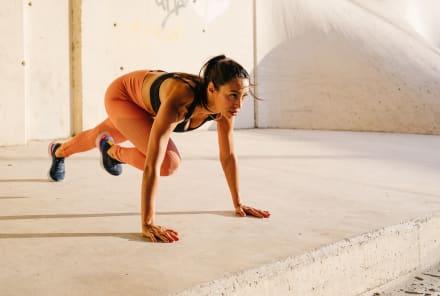
Short On Time? Try This Personal Trainer's 5-Minute Full-Body Workout
Krista Stryker, NSCA-CPT

Short On Time? Try This Personal Trainer's 5-Minute Full-Body Workout
Krista Stryker, NSCA-CPT

Short On Time? Try This Personal Trainer's 5-Minute Full-Body Workout
Krista Stryker, NSCA-CPT

Short On Time? Try This Personal Trainer's 5-Minute Full-Body Workout
Krista Stryker, NSCA-CPT
